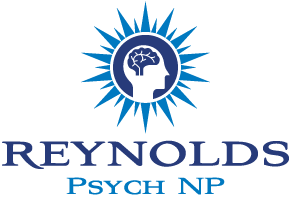Medication errors are a serious issue in healthcare, leading to patient harm, prolonged hospital stays, and even avoidable deaths. According to the World Health Organization, unsafe medication practices and errors cause at least one death every day in the United States and injure approximately 1.3 million people annually. With the growing complexity of treatments and polypharmacy (patients taking multiple drugs at once), preventing these errors has become a top priority.
One of the most effective tools to address this challenge is the Clinical Decision Support System (CDSS). Integrated with Electronic Health Records (EHRs), these systems provide real-time alerts and guidance that help clinicians make safer prescribing decisions.
1. What Is a Clinical Decision Support System (CDSS)?
A Clinical Decision Support System is a digital tool designed to assist healthcare providers with decision-making tasks. It analyzes patient data, compares it against evidence-based guidelines, and delivers real-time alerts, reminders, and recommendations.
In the context of medication management, CDSS focuses on:
- Drug–drug interaction checks.
- Allergy warnings.
- Dose adjustments based on age, weight, or kidney/liver function.
- Duplicate therapy alerts.
- Evidence-based treatment suggestions.
2. How Medication Errors Happen
Medication errors can occur at several points in the prescribing and dispensing process:
- Prescribing: A doctor may unintentionally prescribe the wrong drug, dose, or frequency.
- Transcribing: Errors happen when orders are recorded incorrectly in the system.
- Dispensing: Pharmacists may misinterpret unclear prescriptions.
- Administration: Nurses or patients may take the wrong dose or at the wrong time.
CDSS is primarily effective at reducing prescribing and transcribing errors, which are the earliest points of failure.
3. How CDSS Prevents Medication Errors
CDSS tools integrated into EHRs provide real-time decision support when a doctor or pharmacist is prescribing or reviewing medication. Some common features include:
a) Drug–Drug Interaction Alerts
If a patient is already on a medication that could interact with a newly prescribed drug, CDSS instantly generates an alert.
Example: A patient on blood thinners is prescribed an antibiotic known to increase bleeding risk. The CDSS will notify the prescriber before the order is completed.
b) Allergy Warnings
The system cross-checks the patient’s allergy history against prescribed medications.
Example: If a patient with a penicillin allergy is prescribed amoxicillin, the system blocks the order and suggests alternatives.
c) Dose Adjustment Recommendations
CDSS considers patient-specific factors such as age, weight, kidney function, and liver function.
Example: In elderly patients with reduced kidney function, a CDSS may suggest lowering the dose of certain antibiotics to prevent toxicity.
d) Duplicate Therapy Prevention
Sometimes, patients may accidentally be prescribed two drugs from the same class. CDSS identifies these duplicates and flags them for review.
e) Evidence-Based Guidelines Integration
Modern CDSS tools connect with updated clinical guidelines, ensuring that treatments align with best practices and current research.
4. Evidence of Effectiveness
Research supports the role of CDSS in reducing medication errors:
- A study published in BMJ Quality & Safety found that CDSS reduced serious medication errors by up to 55% in hospitals.
- According to the Journal of the American Medical Informatics Association (JAMIA), real-time alerts prevented 1 out of every 6 potentially harmful prescribing errors.
- Hospitals using CDSS as part of computerized provider order entry (CPOE) systems report significant decreases in adverse drug events and patient harm.
5. Challenges and Limitations
While CDSS is powerful, it is not perfect. Some challenges include:
- Alert fatigue: Too many unnecessary alerts can cause clinicians to ignore important ones.
- Data quality issues: If the EHR has incomplete or outdated patient data, CDSS recommendations may be less reliable.
- Integration problems: Not all healthcare systems have seamless integration between EHRs and CDSS tools.
The key is to balance sensitivity (catching errors) with specificity (avoiding unnecessary alerts).
6. The Future of CDSS in Medication Management
The next generation of CDSS will use artificial intelligence and machine learning to become even more precise and personalized. Future systems may:
- Predict which patients are at highest risk of non-adherence.
- Suggest personalized medication regimens based on genetic information.
- Use natural language processing to analyze unstructured clinical notes for hidden risks.
As these tools evolve, they will continue to reduce errors, improve efficiency, and save lives.
Final Thoughts
Medication errors are a preventable cause of harm in healthcare, but technology provides a solution. Clinical Decision Support Systems (CDSS), when integrated with EHRs, offer real-time alerts and evidence-based recommendations that significantly reduce prescribing errors.
For healthcare organizations, adopting CDSS is not just about compliance but about creating a safer, more reliable system for patients.
If you want to learn more about safe prescribing practices, medication management, or implementing advanced solutions in your healthcare setting, contact Reynolds Psych NP today for expert guidance and patient-centered care.







